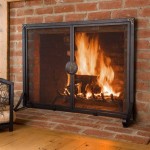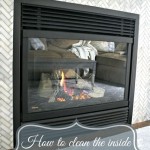Fireplaces in Bedrooms: A Comprehensive Guide
Fireplaces in bedrooms represent a convergence of comfort, aesthetics, and functionality. Once a primary source of heat, fireplaces have evolved into a sought-after amenity that imbues bedrooms with a sense of luxury and relaxation. Modern installations offer a range of options, from traditional wood-burning models to convenient electric and gas versions, each presenting distinct advantages and considerations for homeowners. This article explores the various aspects of incorporating fireplaces into bedroom designs, focusing on safety, efficiency, design considerations, and the impact on overall home value.
Types of Fireplaces Suitable for Bedrooms
The selection of a suitable fireplace for a bedroom necessitates careful evaluation of several factors, including space constraints, ventilation capabilities, and individual preferences. The primary types of fireplaces commonly considered for bedroom installations include wood-burning, gas, and electric models.
Wood-Burning Fireplaces: These traditional fireplaces offer an authentic ambiance and the distinctive aroma of burning wood. However, they require a fully functional chimney for proper ventilation and necessitate adherence to local burning regulations. Wood-burning fireplaces also demand a consistent supply of firewood and regular maintenance, including ash removal and chimney cleaning. Due to these complexities, wood-burning fireplaces are less frequently chosen for bedroom installations, particularly in modern homes.
Gas Fireplaces: Gas fireplaces provide a convenient and efficient alternative to wood-burning models. They operate on natural gas or propane and offer instant heat at the touch of a button. Gas fireplaces don't produce the same level of particulate matter as wood-burning models, making them a cleaner option. They still require proper venting, typically through a direct-vent system that exhausts combustion gases directly outside the building. Gas fireplaces are available in a variety of styles, from traditional log sets to contemporary linear designs, making them a versatile choice for different bedroom aesthetics. Furthermore, many gas fireplaces feature thermostatic controls, allowing for precise temperature regulation.
Electric Fireplaces: Electric fireplaces are the simplest and most versatile option for bedroom installations. They require no venting and can be easily installed in virtually any room with a standard electrical outlet. Electric fireplaces utilize heating elements to generate warmth and often feature realistic flame effects created by LED lights. While they don't provide the same level of heat as wood-burning or gas fireplaces, electric models are sufficient for supplemental heating in smaller spaces. They are also available in a wide range of styles, including wall-mounted units, freestanding models, and fireplace inserts, catering to diverse design preferences. Moreover, electric fireplaces are often the most cost-effective option, both in terms of initial purchase price and ongoing operating costs.
Safety Considerations for Bedroom Fireplaces
Safety is paramount when incorporating a fireplace into a bedroom environment. Regardless of the type of fireplace chosen, adherence to safety protocols is crucial to prevent fire hazards, carbon monoxide poisoning, and other potential risks. Regular maintenance and inspections are essential components of safe fireplace operation.
Carbon Monoxide Detectors: Installation of carbon monoxide detectors is mandatory in any bedroom with a fuel-burning fireplace, including gas and wood-burning models. Carbon monoxide is an odorless, colorless gas produced by incomplete combustion, and exposure can be fatal. Detectors should be strategically placed near the fireplace and sleeping areas to provide early warning of elevated carbon monoxide levels. Batteries should be checked regularly and replaced as needed.
Proper Ventilation: Adequate ventilation is critical for both wood-burning and gas fireplaces. Wood-burning fireplaces require a well-maintained chimney to effectively exhaust smoke and combustion gases. Gas fireplaces typically utilize a direct-vent system that draws air from outside the building for combustion and vents exhaust gases directly outside. Annual inspections of the chimney and vent system are essential to ensure proper functioning and prevent blockages.
Clearance Requirements: Maintaining adequate clearance between the fireplace and combustible materials, such as furniture, bedding, and curtains, is essential to prevent accidental fires. Manufacturers provide specific clearance requirements for each fireplace model, which should be strictly adhered to during installation. Fire-resistant materials, such as non-combustible hearth extensions, can be used to further protect surrounding surfaces.
Child and Pet Safety: Fireplaces can pose a burn risk to young children and pets. Fireplace screens or barriers should be used to prevent direct contact with hot surfaces. Supervise children and pets closely when the fireplace is in use. Consider installing a safety gate around the fireplace to prevent access, especially when it is unattended.
Regular Inspections and Maintenance: Regular inspections and maintenance are crucial for ensuring the safe and efficient operation of any fireplace. Wood-burning fireplaces require annual chimney sweeping to remove creosote buildup, which is a highly flammable substance that can lead to chimney fires. Gas fireplaces should be inspected annually by a qualified technician to check for gas leaks, burner malfunctions, and vent obstructions. Electric fireplaces require minimal maintenance, but the heating elements and wiring should be inspected periodically for signs of wear or damage.
Design and Aesthetic Considerations
The incorporation of a fireplace into a bedroom design can significantly enhance the visual appeal and overall ambiance of the space. The fireplace can serve as a focal point, creating a warm and inviting atmosphere. Careful consideration should be given to the style, materials, and placement of the fireplace to ensure it complements the existing décor and reflects the homeowner's personal taste.
Style and Materials: The style of the fireplace should align with the overall aesthetic of the bedroom. Traditional bedrooms often feature fireplaces with ornate mantels, decorative tile surrounds, and classic log sets. Contemporary bedrooms may incorporate sleek, linear fireplaces with minimalist designs and modern materials such as stainless steel or glass. The choice of materials for the fireplace surround can also significantly impact the overall look and feel of the room. Options include brick, stone, tile, wood, and even concrete.
Placement and Proportion: The placement of the fireplace should be carefully considered to maximize its visual impact and create a balanced composition. A fireplace is usually placed on a long wall, acting as a natural focal point. The size of the fireplace should be proportional to the size of the room. A large fireplace in a small bedroom can feel overwhelming, while a small fireplace in a large bedroom may appear insignificant.
Integration with Décor: The fireplace should be seamlessly integrated with the surrounding décor. The colors and textures of the fireplace surround should complement the existing color palette of the room. Decorative accessories, such as candles, picture frames, and vases, can be placed on the mantel to enhance the fireplace's visual appeal. The fireplace can also be incorporated into a larger architectural feature, such as a built-in entertainment center or a custom library.
Creating a Cozy Ambiance: A fireplace can significantly contribute to creating a cozy and inviting ambiance in the bedroom. Soft lighting, comfortable seating, and plush textiles can be used to enhance the fireplace's warmth and create a relaxing atmosphere. Consider adding a comfortable armchair or chaise lounge near the fireplace to create a designated reading or relaxation area. A fireplace can also be used to create a romantic atmosphere in the bedroom. Soft lighting, flickering flames, and a warm fire can create a perfect setting for a relaxing evening.
Impact on Home Value
The addition of a fireplace to a bedroom can potentially increase the overall value of a home. Fireplaces are generally considered a desirable amenity, particularly in colder climates, and can enhance the appeal of the property to potential buyers. However, the extent to which a fireplace increases home value depends on several factors, including the type of fireplace, the quality of the installation, and the overall condition of the home.
Desirable Feature: Fireplaces are often viewed as a luxury feature that can enhance the desirability of a home. A well-designed and properly installed fireplace can create a sense of warmth, comfort, and sophistication, making the home more appealing to potential buyers. In colder climates, a fireplace can be particularly valuable, as it can provide supplemental heating and create a cozy atmosphere during the winter months.
Return on Investment: While the addition of a fireplace can potentially increase home value, it's important to consider the return on investment. The cost of installing a fireplace can vary significantly depending on the type of fireplace, the complexity of the installation, and the materials used. The increase in home value resulting from the addition of a fireplace may not always offset the initial investment. It's important to carefully consider the costs and benefits before deciding to install a fireplace with the primary goal of increasing property value.
Quality of Installation: The quality of the fireplace installation is a critical factor in determining its impact on home value. A poorly installed fireplace can be a safety hazard and may detract from the overall appeal of the home. It's essential to hire a qualified contractor to ensure that the fireplace is installed correctly and meets all applicable building codes. A professionally installed fireplace will not only be safer and more efficient but will also enhance the overall value of the home.
Overall Home Condition: The impact of a fireplace on home value is also influenced by the overall condition of the home. A fireplace is unlikely to significantly increase the value of a home that is in poor condition or requires significant repairs. However, a fireplace can be a valuable addition to a well-maintained home that is already in good condition. It's important to address any necessary repairs or improvements to the home before investing in a fireplace to maximize its impact on property value.
Ultimately, the decision of whether or not to install a fireplace in a bedroom involves a careful consideration of several factors, including personal preferences, safety concerns, design considerations, and potential impact on home value. By weighing these factors carefully, homeowners can make an informed decision that will enhance the comfort, aesthetics, and value of their home.

20 Bedroom Fireplace Designs

50 Bedroom Fireplace Ideas Fill Your Nights With Warmth And Romance Glamourous Remodel Design

Stunning Minimalist Fireplace Designs

Modern Fireplaces For Your Bedroom Blaze

Cozy Bedroom Fireplace Ideas

Bedroom Fireplace Design Ideas Decor Advice Period Home Style

20 Bedroom Fireplace Designs

9 Ways To Make The Most Of A Bedroom Fireplace Houzz Ie

Bedroom Fireplaces A Way Of Making This Room Even More Warm Cozy And Inviting

Pin On Home Design
Related Posts








